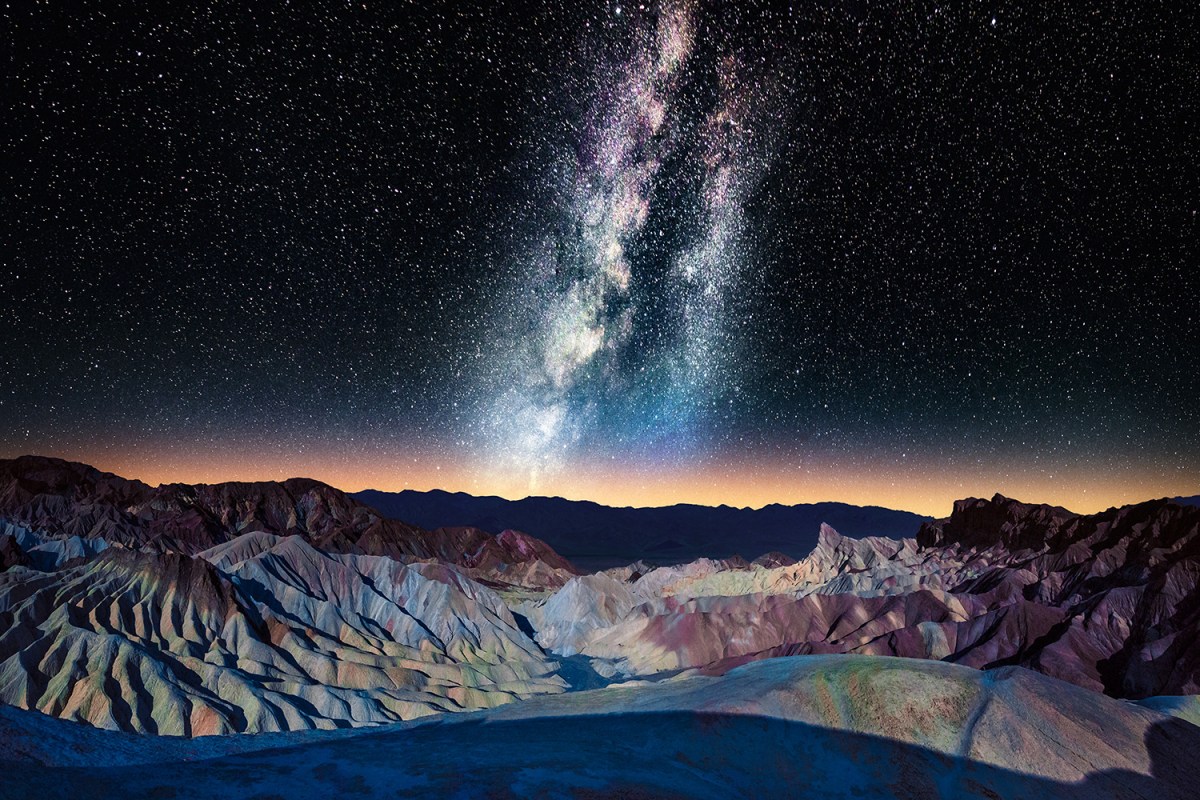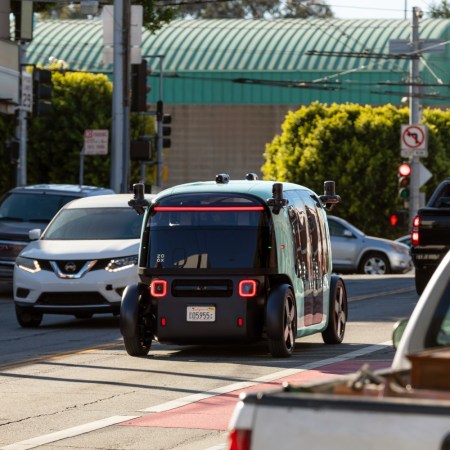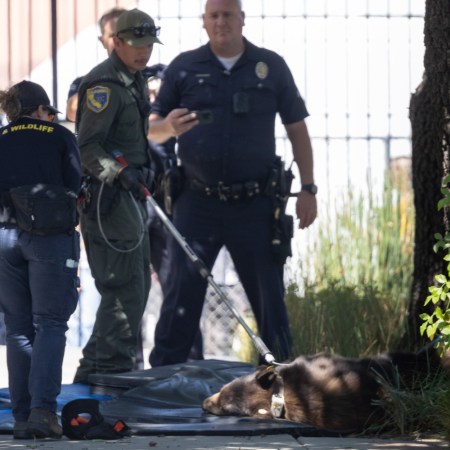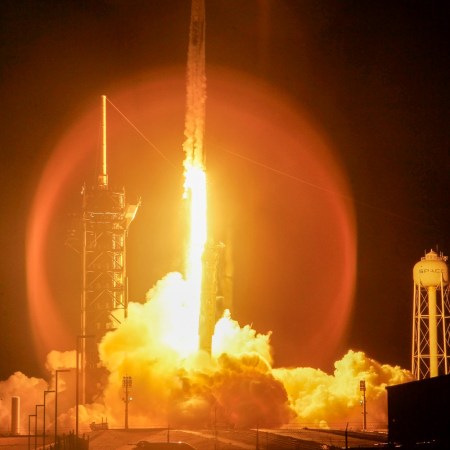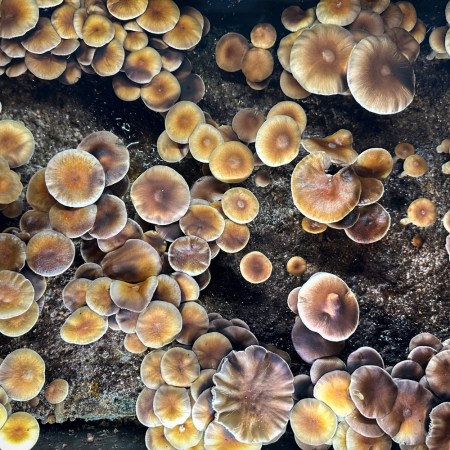The entire month of June brings an astronomical wonder to behold. For the first time in 18 years, five planets — Jupiter, Mars, Venus, Saturn and Mercury — will be aligned in the night sky and visible to the naked eye. Mark your calendars for June 24, when the view is expected to be exceptional: Stargazers who wake up wicked early (30 minutes before sunrise) should be able to see a beautiful, waning crescent moon between Venus and Mars. The best place to enjoy this cosmic happening is far from artificial light pollution, where inky skies make the planets incredibly vivid.
We’ve found eight dark corners of California ideal for soaking up this otherworldly display. We don’t think there’s a better excuse for a summer road trip. That’s why we’ve also included places to stay — from rustic campgrounds to charming resorts.
Anza-Borrego Desert State Park
In California’s far southwest corner sits its largest state park, where cacti and desert vistas meet canyons sculpted by powerful natural forces. Its sheer size and solitude are reasons why Anza-Borrego is one of the top star-gazing spots in the state. While there are plenty of places to take in the predawn five-planet alignment, we recommend Borrego Springs. The town’s commitment to reducing light pollution earned it the status of California’s first International Dark Sky Community. A top viewing spot is Borrego Springs Road near The Nature Center. The road is dotted with 130 metal animal sculptures, accessed by small dirt turnouts, providing an easy place to park and enjoy the planets among sabertooth tigers and elephants.
The adults-only Borrego Valley Inn is a serene adobe lodge that boasts hot tubs, private patios and a clothing-optional pool if that’s your thing. We also recommend the La Casa Del Zorro, a sprawling family-friendly resort where you can cool off during the day in one of the five pools.
Joshua Tree National Park
Less than 150 miles from Los Angeles, Joshua Tree combines the familiar with the otherworldly, a fitting location to view the planets. Joshua Tree is so dark it’s a prime spot for “eyeball astronomy,” which means there’s no need for binoculars or telescopes, though you can bring those if you like. Park at any roadside pullout and set up a chair (don’t forget the food and water). The Pinto Basin Road between Cholla Cactus Garden and Cottonwood Campground has the least traffic and darkest skies.
June nights are a balmy 80 degrees, so sleeping under the stars is a treat. Cottonwood Campground has the darkest skies of all nine campgrounds in the park. Sites come with shaded picnic areas, potable water and public bathrooms, and there’s even an amphitheater. For non-campers, the desert towns surrounding Joshua Tree are filled with charming, offbeat Airbnb rentals like this house with a private hot spring or a geodesic dome on two cactus-studded acres.
Santa Margarita Lake
This artificial lake, about 30 minutes east of San Luis Obispo, is a sleepy fishing destination by day and a Star Party hotspot by night. The Central Coast Astronomical Society knows what’s up: They gather monthly at the Santa Margarita KOA Holiday to gaze at the cosmos, so you’ll be in great company on the weekend of the Five Planet Alignment. Their next star party is on June 25. Kindred spirits will gather in the parking lot of the marina and the boat launch (4695 Santa Margarita Lake Road) to share their fascination with outer space. This is an excellent time to bust out a telescope; the end of the lot will be transformed into a special telescope zone.
The Santa Margarita KOA Holiday spans 70 acres of oaks and pines and offers a mix of rustic cabins, yurts, RV sites with hookups and tented sites with picnic tables. Amenities include a swimming pool, dog walk, playground, volleyball court and 9-hole disc golf course.
Death Valley National Park
Temperatures reach searing highs in June, but according to astronomers, Death Valley will have the best view of the planets in the Southwest. The park is classified as a Gold Tier location by the International Dark Sky Association, meaning it has some of the deepest, darkest skies on the planet. Park rangers recommend Mesquite Flat Sand Dunes near Stovepipe Wells for planet viewing. Park your car in the small lot off Highway 190, then spread out a blanket on the sand. Almost 80% of Americans cannot see the Milky Way, but from here, you’ll easily see celestial objects not visible anywhere else. Look for the Big Dipper and Little Dipper constellations, as well as the North Star (to get your bearings). See if you can identify Cassiopeia, Capricorn, Cygnus or Orion, or try counting the shooting stars.
When going to the hottest place on earth, the smart move is to do the resort thing during the day. Pools, air-conditioning and indoor amenities are essential, and the family-friendly Ranch at Death Valley has it all.
Owens Valley in the Eastern Sierras
The Eastern Sierras is one of the least populated areas in the U.S., which means little-to-no light pollution and staggering night-sky views. Owens Valley is the area’s prime stargazing country, especially the 120- mile stretch of Highway 395 between Lone Pine and Mono Lake. A few recommended spots require an off-road vehicle, so check the Owens Valley stargazing map before going. You might pass the Owens Valley Radio Observatory (OVRU), operated by the California Institute of Technology, one of the largest university-operated observatories in the world — it’s currently closed for tours, but give it a try if you’re up there later this year.
The historic mining town of Benton Hot Springs makes a tranquil home base. Established in the mid-1800s, Benton offers a unique campground with private hot tubs fed by natural springs, a relaxing spot from which to soak in the planets. For non-campers, rooms are available at the homey, rustic Inn at Benton Hot Springs.
Point Reyes National Seashore
The Point Reyes National Seashore offers the best night sky quality closest to a metropolitan area. An hour north of San Francisco, the community recently applied to become an International Dark Sky Reserve to protect against creeping light pollution. If approved, it would join an exclusive group of less than two dozen places on Earth with this status. Check this handy map for the exact times the planets will be visible, and then pack some blankets and cozy up at Limantour Beach, a dog-friendly four-mile stretch with a large, free parking lot.
The family-friendly Olema Campground offers a mix of RV and tent sites right next door to the Point Reyes National Seashore. Perks include fire rings, picnic tables, a playground, a volleyball court, a general store and wifi access. Check Hipcamp for stays slightly further afield in towns like Tomales, Dillon Beach, Stinson Beach and Bolinas.
Lake Tahoe
It may be surprising that this bustling resort community is one of the best stargazing spots in California. The freshwater lake, known for party platoons and summertime crowds, also boasts excellent conditions to see the five-planet alignment. The area sits at a 6200-foot elevation with 300 clear nights per year. Clearly Tahoe offers stargazing paddle tours on the lake (starting at $119), but there are free picturesque beaches from which to see the planets, including Baldwin Beach and Nevada Beach. Travel up the mountain to Hope Valley, about 19 miles from South Lake Tahoe, for an even better view. There are turnouts and parking lots all along the West Fork of the Carson River near the junction of Highway 88 and Highway 89 (Luther Pass Road).
A short stroll from the river, Wylder Resort offers a remarkable convergence of cozy forest cabins, houses with full kitchens, tent sites, yurts and a restored Spartan trailer. A sauna, swimming holes, lawn games and a fishing pond will keep you busy during the day.
Somes Bar, Klamath Mountains
Enter the world’s Bigfoot capital at your own risk. Truth be told, the beauty of planet-gazing in the Klamath Mountains far outweighs the chance of meeting a huge hairy humanoid creature. The entire region is excellent for stargazing, but we suggest making the bucolic town of Willow Creek your home base, where you can get a bite at Raging Creek Pub and check out a Bigfoot exhibit at the museum next door while waiting for night to fall. Armchair cosmophiles will get a nice view of the planets from town. The more hardcore astronomists can trek an hour north to Somes Bar to see the planets. Somes Bar is surrounded by one of the largest roadless areas of the U.S. and is the darkest spot in Siskiyou.
China Creek Cottages offers charming furnished cabins in the woods. Located east of downtown Willow Creek on Highway 299, the property has a small waterfall nestled among firs, oaks and madrones.
This article was featured in the InsideHook SF newsletter. Sign up now for more from the Bay Area.
